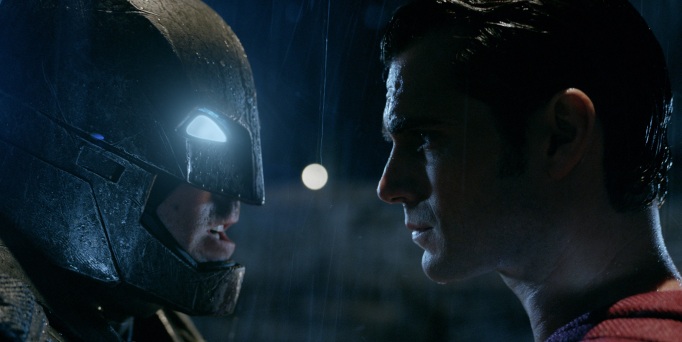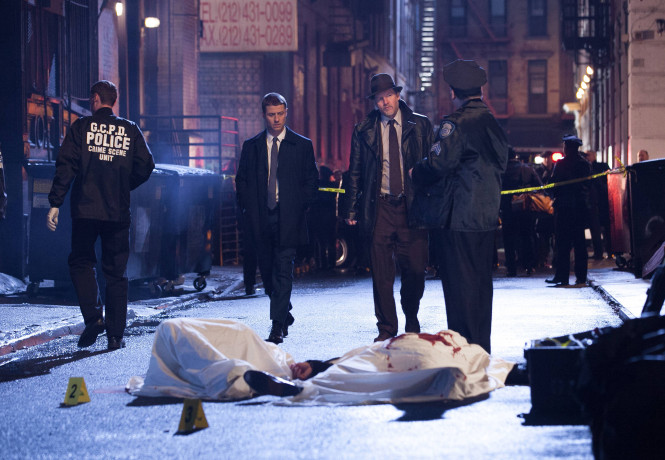 I did not enjoy Batman V Superman: Dawn of Justice. There are things to like about it, but overall this is not a good time at the movies (something you kind of expect when you sit down to watch one of these things).
I did not enjoy Batman V Superman: Dawn of Justice. There are things to like about it, but overall this is not a good time at the movies (something you kind of expect when you sit down to watch one of these things).
Anyways, beyond trying to figure out just what the hell was going on in this movie, I’m also trying to make sense of the titular heroes and what the character arcs were exactly. If the characters are compelling, you can forgive a lot when it comes to plot. But if they’re badly written? That’s when you start asking all the questions the filmmakers would rather have you ignore.
So as an experiment, I’m gonna list out all the major things that happen to a bunch of the characters in this movie to see if their motivations and actions are consistent, or at least understandable. This is gonna be all SPOILERS so don’t read if you haven’t seen the movie (and I honestly don’t recommend it unless you’re a hardcore DC fan):
Batman/Bruce Wayne…
- arrives in Metropolis during the Superman/Zod fight from Man of Steel
- saves an employee (Wally) who’s trapped under some wreckage
- sees the destruction that Superman is capable of for the first time
- searches for a large sample of kryptonite found from the wreckage of the giant thingy Superman busted in the Indian Ocean in Man of Steel
- brands a low-level criminal with the bat symbol, which a news report tells us will get the criminal beaten to death in prison
- has a conversation with Alfred where he expresses his extreme viewpoint on Superman: “If we believe there’s even a 1% chance that he is our enemy then we have to take it as an absolute certainty, and we have to destroy him.”
- gets the cheques he’s been sending to Wally (who lost his legs) returned to him with guilt-tripping messages written on them
- watches the Senate hearing on TV where Superman arrives to respond to all the bad shit he’s supposedly done and be confronted by Wally, who blows up the building and kills everyone inside (except Supes obviously)
- steals the kryptonite from Lex
- exercises
- sets traps and signals for Superman to come fight him
- fights Superman with kryptonite weapons
- is about to kill Superman but Superman mentions the name Martha (referring to Martha Kent, but Batman’s mom was also named Martha)
- stops fighting and goes to rescue Martha Kent (who’s been kidnapped)
- realizes only kryptonite can kill the newly created Doomsday; lures Doomsday back to Gotham so he can get the kryptonite spear he left there.
- witnesses Superman sacrifice himself to kill Doomsday
- threatens Lex, who warns of a coming evil thing
- vows to find other metahumans so they can fight future evil
- believes “men are still good” at the end
Written out like this, Batman’s actions appear to be pretty consistent and his hatred of Superman generally makes sense. Even his speech at the end kind of works since this is a veteran Batman whose decades of crimefighting seems to have turned him into a murderer, and seeing Superman’s sacrifice would snap him out of that. What irks me is that the World’s Greatest Detective doesn’t think it’s the least bit suspicious that Superman apparently killed a bunch of people in Africa and is complicit in the Senate hearing bombing while at the same time he’s been flying all over the world saving people, presumably for the last 18 months. Any chance someone may be trying to frame him, Bats?
Superman/Clark Kent…
- saves Lois in Africa by charging a guy through a freaking wall
- sees one news report about Batman; wants Batman dead (but not “dead,” dead)
- does a few actually heroic things
- sees people on TV debate whether he should be hero-ing; gets very, very sad
- talks to Lois about how shitty people are being to him, thinks the idea of Superman is dumb
- arrives at Senate hearing; doesn’t notice suicide wheelchair before it goes off
- goes off to the mountains to have useless conversation with his Ghost Dad
- saves Lois from Lex
- gets blackmailed by Lex into fighting Batman
- tries for approximately 10 seconds to explain the situation to Batman, then gives up and starts throwing him through buildings
- almost gets killed before hilariously blurting out “save Marthaaaaaaaa”
- goes back to Lex; stands there while Lex puts finishing touches on Doomsday
- flies Doomsday out into space; gets hit by nuke
- shakes it off, flies back down to fight Doomsday
- saves Lois; decides ‘this is my world’
- sacrifices himself to kill Doomsday
- gets buried
- is obviously not gonna stay dead
This has got to be the single worst characterization of Superman on the big screen. Zack Snyder and his screenwriters have managed to turn a pop icon, a symbol of inspiration and hope, who helps people because it’s the right thing to do, into a mopey prick who’s seriously conflicted about whether or not he should be helping anyone because some people don’t like him. That is actually what he’s struggling with in the movie. And that would’ve been fine if something in the story convinced him that humanity is worth saving, like maybe some sage advice from his goodhearted parents? Oh wait, the living one tells him he doesn’t owe humanity shit, and the dead one’s lesson implies that he shouldn’t help people because all actions have consequences.
So his arc is that he goes from basically hating mankind because they complain about him sometimes (so much so that he straight up leaves for the mountains before Lois gets kidnapped again), to resigning himself to killing someone if they can’t be reasoned with, to willing to sacrifice himself because he loves the world? Can you connect the dots with a pencil if they’re on separate sheets of paper in different rooms?
Perry White…
- chastises Clark Kent for prioritizing reporting on Batman’s vigilantism over sports
- allows Lois Lane to do whatever the hell she wants
Lois Lane…
- gets taken hostage in Africa; gets saved by Superman
- investigates weird bullets used by bad guys in Africa
- gets kidnapped by Lex Luthor; gets saved by Superman
- goes to help Superman before Batman kills him; takes kryptonite spear and throws it into some water
- realizes only kryptonite can kill the newly created Doomsday (absolutely no way she can know this); goes back to water to retrieve spear she threw away
- almost drowns; gets saved by Superman
Lois Lane’s purpose in the movie is to be rescued. Nothing else she does matters in any way.
Martha Kent…
- tells Clark to either be the hero and symbol for hope that humanity needs or tell humanity to go fuck itself
- gets kidnapped by Lex Luthor’s hired goons; gets saved by Batman
Ghost Jonathan Kent…
- tells Clark a story, the moral of which is basically “if you do a good thing, bad things will happen as a result”
Clark really needed to be protected from these people when he was a boy.
Wonder Woman…
- borrows a device Bruce Wayne was using to steal encrypted info from Lex Luthor
- returns said device
- sees Doomsday on TV; goes to fight Doomsday
Actually maybe this is the most consistent character arc in the movie.
Lex Luthor…
- finds kryptonite
- “lures” Superman to Africa because Lois was there; has a bunch of people killed to frame him?
- talks some guy (way too easily) into giving him full access to Zod’s ship and Zod’s body
- gains a ton of knowledge from Zod’s talking ship?
- returns Bruce Wayne’s cheques to Wally back to him with guilt-tripping messages because he somehow knows Wayne is Batman?
- coerces Wally into blowing up Senate hearing to frame Superman even more?
- uses Zod’s body to create Doomsday monster
- kidnaps Martha Kent
- kidnaps Lois Lane for the express purpose of pushing her off a building just so Superman will come save her
- blackmails Superman into fighting Batman
- unleashes Doomsday
- disappears from the movie until he somehow lands in jail
- apparently loses his mind
You’ll notice that I don’t seem very sure about Lex Luthor’s actions in the movie. That’s because I’m not, and that’s because they don’t make any damn sense.
How does having a bunch of people in Africa SHOT BY GUNS make it look like Superman did it?
Why does Lex seem to be losing his mind before he starts talking to the Kryptonian ship (I mean, if it starts happening afterwards at least you can connect those dots into something plausible)
Why does he blow up the Senate hearing? The news immediately reports that Wally is the one who set off the bomb so there’s no way it could look like Superman did it, so WTF?
What’s his problem with Batman?
What the hell is his plan if Doomsday successfully kills Superman?
Since we’re talking about character motivation, let’s not forget the reason Lex hates Superman so much is because he wasn’t around when his dad hit him or something.
And in case you were worried the big fight with Doomsday was gonna result in even more dead bodies and destruction, Anderson Cooper helpfully points out on the news that the work day is over and therefore ALL of downtown is empty.
This movie is insane.
 A LOT of thoughts here so we should just jump right in. I played Batman: Arkham Knight on PlayStation 4, and completed 100% of the Story mode.
A LOT of thoughts here so we should just jump right in. I played Batman: Arkham Knight on PlayStation 4, and completed 100% of the Story mode. While overseeing the beating of a man in an alleyway, a thug asks a young Jim Gordon (Ben McKenzie), “How do you like Gotham so far?” Jim replies, “Well enough.”
While overseeing the beating of a man in an alleyway, a thug asks a young Jim Gordon (Ben McKenzie), “How do you like Gotham so far?” Jim replies, “Well enough.”










